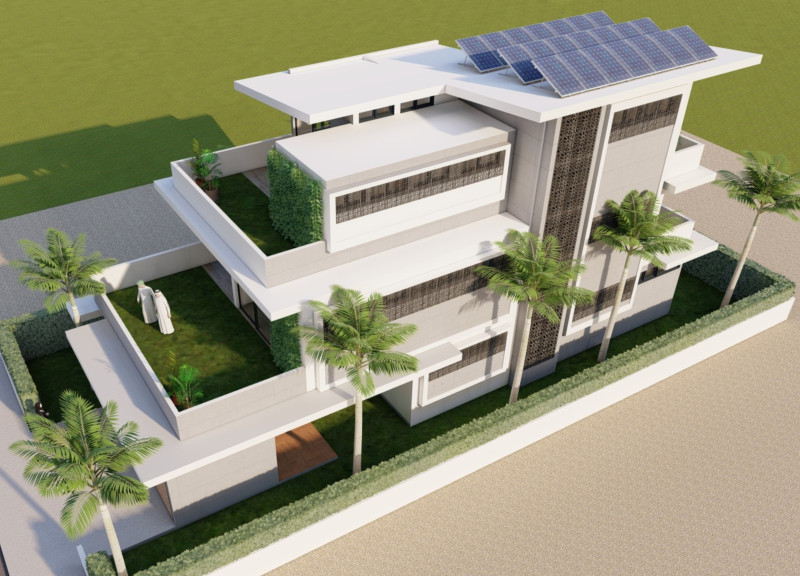5 key facts about this project
At its core, the design emphasizes a commitment to creating flexible spaces that adapt to various activities and promote collaboration. The open-plan layout is complemented by strategically placed partitions that provide privacy without compromising the overall sense of openness. Natural light floods the interior through expansive windows, enhancing the atmosphere and connecting occupants with the external environment. This relationship between indoor and outdoor spaces is further emphasized through the inclusion of terraces and green roofs, allowing for recreational areas that contribute to the well-being of users and the community.
The materiality of the project is thoughtfully selected, showcasing a blend of sustainable and durable materials. Predominantly featuring reinforced concrete, glass, and timber, the palette speaks to modern architectural sensibilities while ensuring longevity and minimal environmental impact. The use of glass not only allows for abundant natural light but also acts as a visual link to the landscaped areas surrounding the building. In contrast, the warm tones of timber add a tactile dimension and foster a sense of comfort within the interior spaces.
Unique design approaches are evident throughout the project, particularly in the way it embraces energy efficiency and sustainability. The architecture incorporates passive design strategies that reduce reliance on mechanical heating and cooling systems. Features such as solar panels and rainwater harvesting systems underscore a commitment to environmental stewardship without compromising aesthetic value. This thoughtful integration of sustainability reflects current architectural trends that prioritize eco-friendly practices and innovative technologies.
Moreover, the building’s facade presents a harmonious blend of vertical and horizontal elements, creating a rhythm that enhances its visual appeal. The strategic placement of balconies introduces layers to the design, providing private outdoor spaces for occupants while adding depth to the overall structure. The exterior also utilizes a combination of textures, reinforcing the dialogue between solid and void, and further establishing a connection with the urban fabric.
Overall, the project stands as a testament to the potential of contemporary architecture to respond thoughtfully to the needs of its context, occupants, and environment. The blend of functionality, sustainability, and innovative materials establishes a model for future developments. As the architectural community continues to explore new ideas and techniques, this project contributes to the ongoing dialogue about the role of design in enhancing quality of life.
Readers interested in a deeper understanding of the project are encouraged to examine the architectural plans, sections, and designs that showcase the project’s intricacies and the thought process behind its creation. Exploring these elements will provide a comprehensive insight into the architectural ideas that shape this exemplary design.


 Jose Fernando Rafael Balette Lopez
Jose Fernando Rafael Balette Lopez 























